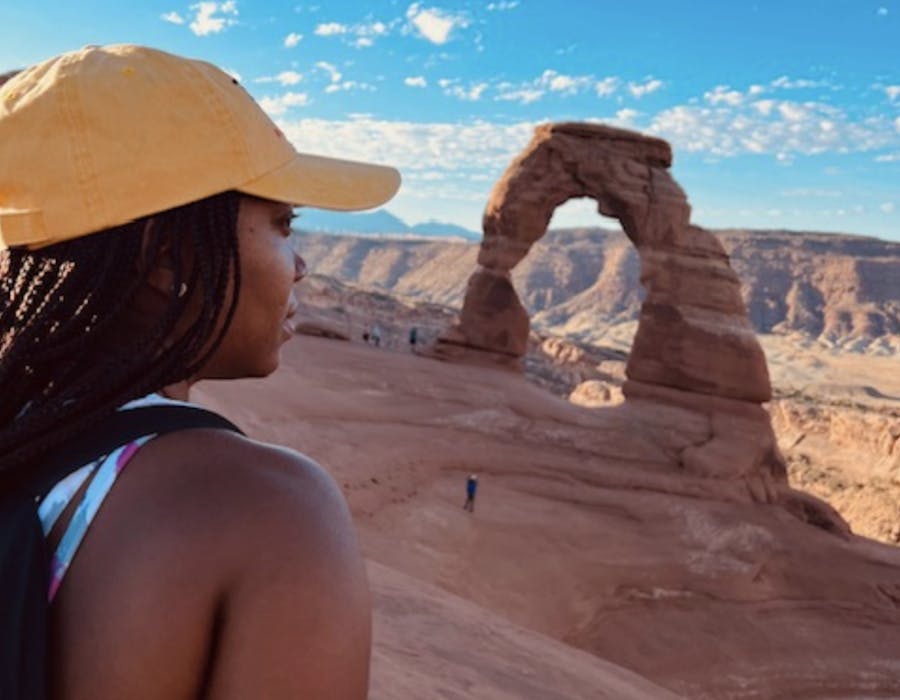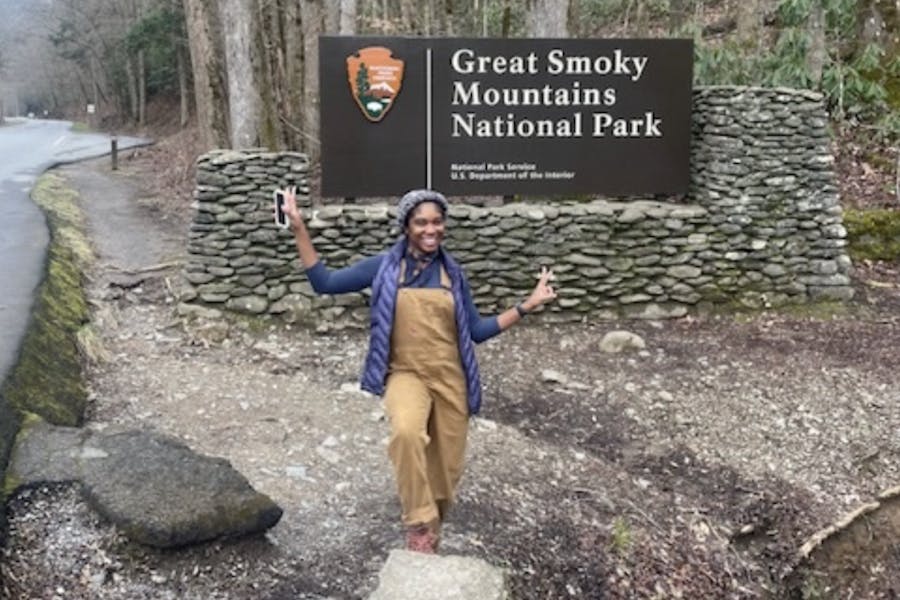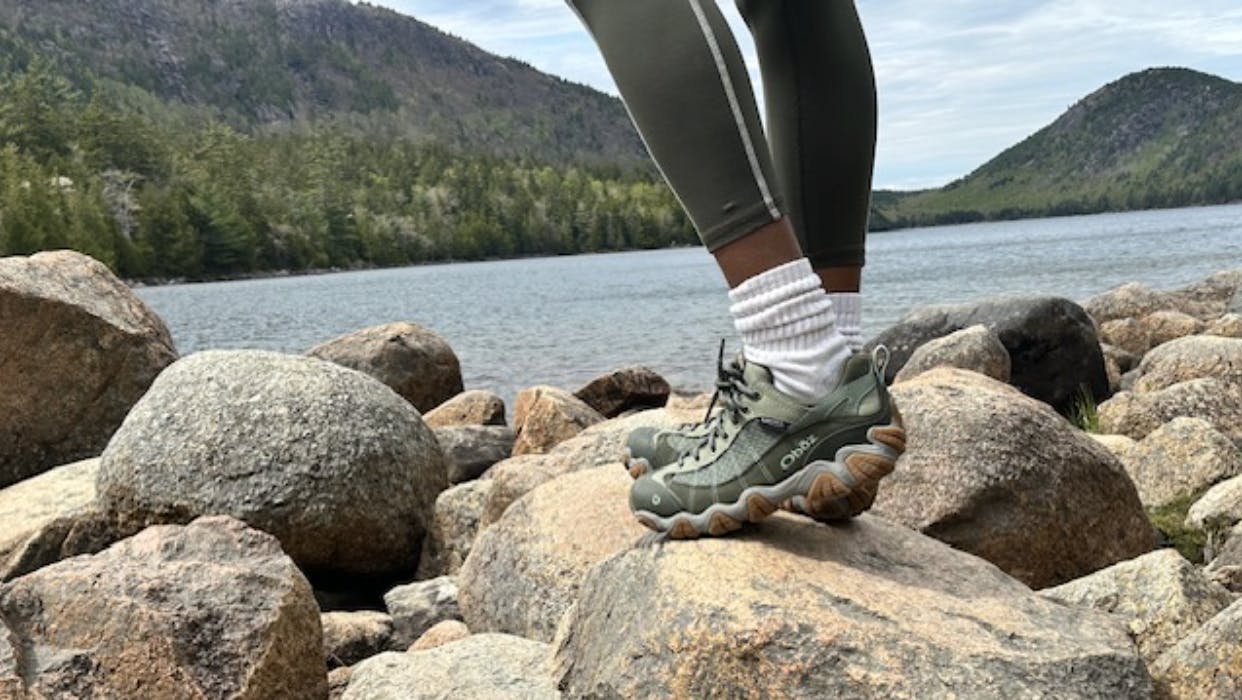Written and contributed by Kristen Walker, a lifelong Baltimore City resident with a passion for outdoor exploration and conservation. She is the Co-Founder of Our Parks Too! An initiative to increase the visibility of Black joy and recreation in the National Parks system.
In 2022 I was selected as an Environmental Leader with SoulTrak Outdoors, a DC-based nonprofit that connects communities of color to outdoor spaces while also building a coalition of diverse outdoor leaders. I participated in many outdoor recreation and stewardship activities which deepened my love for public lands and the natural environment. I was lucky to embark on my first National Park trips to Canyonlands, Arches, and Virgin Islands National Parks with this group of diverse, intelligent, and talented nature lovers who looked like me. We performed trail maintenance and archaeological restoration while enjoying canyoneering, whitewater rafting, hiking, and fellowship.
As an inner-city dweller, this experience was unique, as previously it was rare for me to see Black people enjoying these public lands so thoroughly. There is a reason for that. During the formation of these celebrated sites, African Americans were discouraged or barred from visiting national parks. On holidays like National Public Lands Day, we celebrate the natural wonders of our nation and remember with gratitude that in 2024 we can recreate freely on these lands, but that wasn't always the case.

During the mid-19th century, the Industrial Revolution brought major technological advances which bolstered economic activities like mining, logging, and farming lending to large-scale exploitation of the nation’s natural resources. As wealthy Americans began to recognize the aesthetic, spiritual, and economic potential value of nature, the movement to conserve these areas grew.
The first steps toward the official establishment of National Parks as federally protected lands, the Yosemite Valley was the first land set aside for public use and preservation in 1864 when President Abraham Lincoln signed the Yosemite Grant, issuing the land to the state of California for preservation.
In 1872 Yellowstone National Park became the first area of land designated by the federal government and President Ulysses S. Grant "for the benefit and enjoyment of the people." It was feral and protected by the US Army from poaching, development, and other damaging activities. Sequoia, Yosemite, and Mount Ranier National Parks followed in the 1890s with no effective system to manage these lands until 1916, when the National Park Service was officially created by the Organic Act, signed by President Woodrow Wilson. The National Park Service was tasked with managing the established national parks, monuments, and reservations to ensure and preserve their stability for future generations.

Wallace Stegner, a Pulitzer Prize-winning environmentalist, called the National Parks “the best idea” the United States has ever had. The National Parks are widely cherished as an exemplification of the beauty and wonder that the nation has to offer. At the same time the origin of this system of protected lands has a complicated history. As the origin of National Parks coincided with the era of Jim Crow laws, the institutional racism and discrimination from that time resulted in African Americans being barred from full access to these spaces. For example, the only area accessible to Black visitors of Shenandoah National Park (est. 1935) was Lewis Campground – a site I visited last year. Otherwise, at that time, African Americans were not represented in the establishment, leadership or management of the National Park Service.
Despite this systematic exclusion, African Americans made essential contributions to the National Park System. The African American regiment called the Buffalo Soldiers, helped to protect and maintain several West Coast national parks, including Yosemite and Sequoia, before the official creation of the National Park Service. The Buffalo Soldiers, under the command of white officers, patrolled the parks to prevent illegal poaching, control fires, and build infrastructure, such as roads and trails.
The Civilian Conservation Corps officially allowed Black people to join and work in national parks, but they faced widespread segregation and bullying. They were often relegated to lower-level, less technical jobs like cooking and domestic work. These African Americans played a significant role in the development of national parks but unfortunately under highly discriminatory conditions.
The Civil Rights Movement helped to dismantle some of the racial barriers that had prevented African Americans from fully enjoying national parks. Black leaders such as Mary McLeod Bethune, Ella Baker and James Farmer held clandestine meetings at what are now National Historic Parks like the Franklin and Eleanor Roosevelt National Historic sites to advance civil rights. The Civil Rights Act of 1964, which banned segregation in public spaces, was a major step forward in ensuring that national parks were open to all Americans, regardless of race.
As a result of this sordid history, African Americans remain largely underrepresented as visitors and employees in the national parks. Studies show that Black Americans visit national parks at lower rates than other racial and ethnic groups.
Black visitorship hovers around only 4-6% of total visitors, and only about 6% of the total National Parks workforce is African American. This is in part due to historical exclusion, economic barriers, and perceptions of national parks as "white spaces” and recreating outdoors in general as “white” activities.
Organizations like Our Parks Too!, SoulTrak Outdoors, Black Girls Hike, and others are working to connect Black Americans with nature and public lands. As over 14% of the population in the US, we should be represented in public land use and outdoor recreation.

Today, the national parks are open to all. Ongoing efforts are needed to ensure that these spaces are preserved and enjoyed by diverse future generations. My initiative Our Parks Too! specifically focuses on educating people about the contributions and historical connections of Black people in and around the National Parks using social media and photojournalism. With increasing pressures from climate change, development, and resource extraction, it is imperative to preserve the glory of these spaces for future generations. To do that we need an all-hands-on-deck approach, which will only be achieved with efforts towards diversity, inclusion, and exposure to the wonders of the great outdoors.
There are a few things we can do to help ensure the longevity of these natural wonders:
- Encourage Diversity in Outdoor Recreation: Increasing diversity among park visitors and outdoor enthusiasts is an important way to ensure that public lands are valued by all Americans. Encouraging underrepresented groups, including African Americans, to visit national parks and participate in outdoor recreation can foster a new generation of public lands advocates.
- Support Environmental Organizations: Many nonprofit organizations and B corporations work to protect public lands and advocate for conservation. Supporting groups like the Sierra Club, National Parks Conservation Association, and the Wilderness Society can amplify the voices of those fighting to preserve these areas. Donations, volunteering, participating in advocacy campaigns, and buying a pair of Oboz to plant a tree can all make a difference.
- Promote Sustainable Recreation: Ensuring that public lands remain healthy and accessible requires responsible use. Advocating for and practicing Leave No Trace principles, supporting infrastructure improvements, and promoting sustainable recreation can help mitigate the environmental impact of increasing visitor numbers. This includes supporting trail maintenance, reducing litter, and encouraging responsible behavior in natural areas.
- Advocate for Stronger Legislation: One of the most effective ways to protect public lands is through legislation. Citizens can advocate for stronger laws that expand protections for national parks, wilderness areas, and other public lands. This includes supporting the designation of new national monuments or parks and ensuring that existing protections are not rolled back.
- Engage in Public Comment Processes: Federal agencies like the National Park Service and Bureau of Land Management often solicit public comments when making decisions about land use. Engaging in these processes by submitting comments, attending public meetings, and advocating for conservation-focused policies can help shape the future of public lands.



